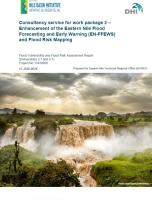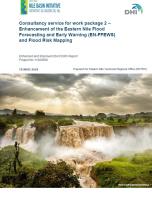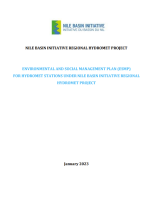Abstract
The Nile Basin is home to some of the poorest communities in the world. Expansion and intensification of agriculture are crucial for ensuring food security, improving livelihoods and reducing poverty in the basin. Improving irrigation facilities is considered as a key strategy to enhance agricultural productivity. Spatial information about various aspects of irrigation suitability is an essential input to decision making on irrigation development. Irrigation suitability is determined by a combination of multiple factors such as land, water, climate, and environmental and socioeconomic conditions.
This study provides an update on previous estimations of ‘land suitability’ for irrigation in the Nile Basin, utilizing the improvements in spatial data on environmental variables. It focuses on the physical factors of land and does not consider water availability and economic costs. The study categorizes the agricultural land in the basin on a suitability scale ranging from ‘permanently not suitable’ to ‘highly suitable’ areas for irrigation. It provides baseline information for further more complex analysis of water and environmental suitability for irrigation development.
The methods used in the study broadly follow the framework of the Food and Agriculture Organization of the United Nations (FAO) for land suitability evaluation. Land suitability was evaluated by assessing the soil and terrain suitability for irrigation. Terrain suitability was evaluated based on the slope of the land derived from a digital elevation model (DEM). Soil suitability was assessed using parameters such as drainage, texture, available water storage capacity, pH, physico-chemical organic carbon, salinity, sodicity and soil depth. The Harmonized World Soil Database v1.2 (HWSD) and the Africa Soil Grids (AfSoilGrids250m) datasets were used to assess soil suitability. A multi-criteria evaluation (MCE) procedure following Analytic Hierarchy Process (AHP) method was used on a geographic information system (GIS) platform to develop a composite soil suitability index. The soil suitability index was combined with the terrain suitability categories to generate the final suitability map. The study estimated that a total land area of 49.8 million hectares is suitable for irrigation in the Nile Basin, of which about 7.5 million hectares is ‘highly suitable’. The area of planned irrigation schemes under each land suitability category is also provided. However, to determine the feasibility and actual design of specific projects, it is required to refine the land suitability classification by assessing water availability for irrigation and the economic viability of water supply. The results of this study could be useful to identify land that is suitable for irrigation, provided that water can be supplied; and to eliminate land that is permanently not suitable for reasons other than water supply. The outputs could be suitable for basin-level land suitability assessments, and for the identification of potential regions for further exploration of water availability and subsequent irrigation development.




